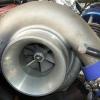How Often Should Spark Plugs Be Changed?
Announcements
-
Similar Content
-
Latest Posts
-
Thanks man, I appreciate that. I'll keep it in mind going forward, important to know.
-
I strongly recommend anyone playing with cars chasing anything electric, get a basic understanding of using a DMM, and about 12V DC systems. They're REALLY easy, you only need to know V=IR and how to apply it, and you can work out what your readings should be doing. For a simple check on a light bulb, you're looking for 12V at the positive to the light, a near zero resistance to ground, and then for a small resistance across the globe when unplugged. If one of those values isn't right, you won't get what you need. Now if they're all okay,and you then plug the light in, and it still won't work, you now do a voltage check across the globe positive to negative. It should effectively read full battery voltage. If it's not, especially if it's quite low, the age old V=IR starts to be able to be thought about, you now know though, for the current flowing, there isn't much voltage for the given resistance, but the rest of that V has to be dropping somewhere else. So now do a voltage check from ground of globe, to ground of car, then do voltage check from positive of battery, to positive of the light connector. Things like a high resistance in a wire/join will start to "steal" voltage on you. So now step back through which ever wire, until you find the voltage drop is non existent, you're now before what ever is steal your voltage for example. There's plenty of YouTube videos, but really worth understanding some V=IR, and doing some even theoretical numbers to start to understand it. Then you'll know what the DMM is telling you.
-
Consider yourself lucky it was just a bulb
-
Item 10: Tech Edge wideband sensor interface and display. You’ll need to buy a new sensor. $150. Item 11: part of a Willians 5 point harness. $40 Item 12: OS88 gear display. No need for it now, my PPG sequential came with one. $30
-








Recommended Posts
Create an account or sign in to comment
You need to be a member in order to leave a comment
Create an account
Sign up for a new account in our community. It's easy!
Register a new accountSign in
Already have an account? Sign in here.
Sign In Now